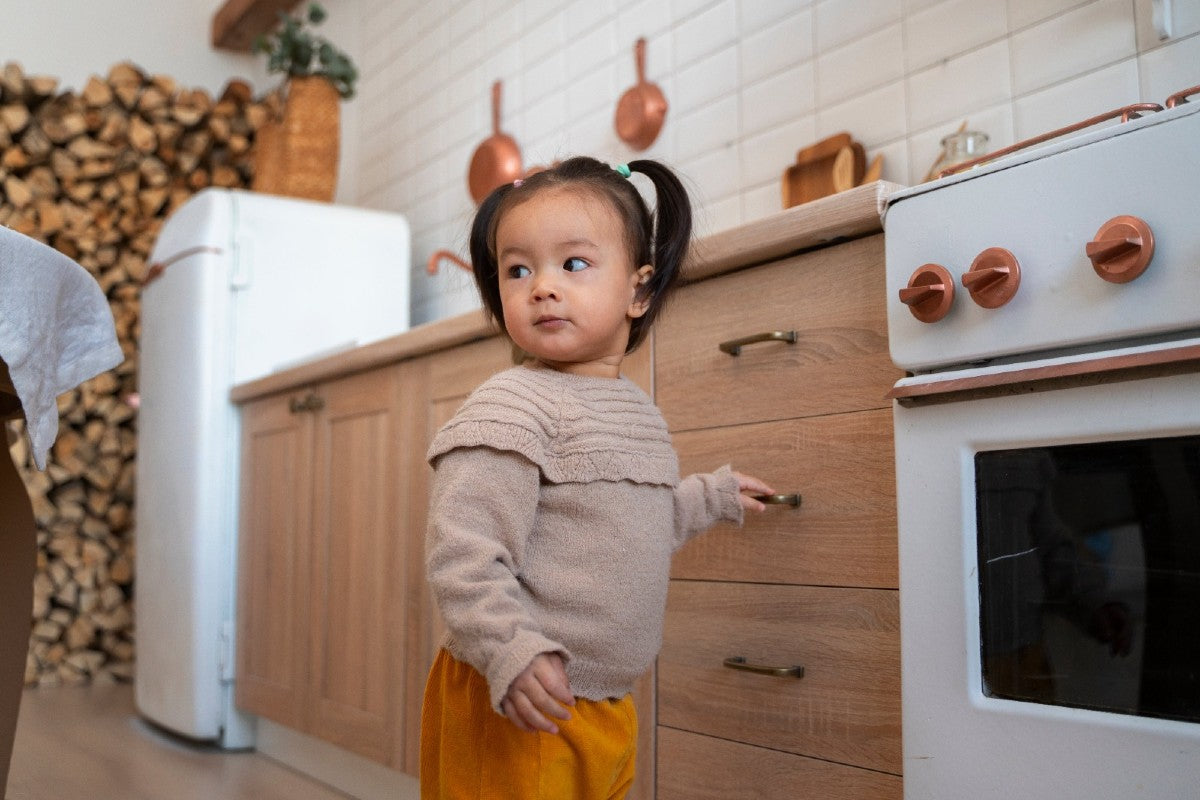
Safe and Sound: Your Comprehensive Babyproofing Checklist
Welcoming a new bundle of joy into your life as well as home is a magical experience, but it also comes with a lot of responsibilities. Ensuring your little one's safety is a top priority, specially when they start to crawl. That's where babyproofing comes in! In this blog, we're going to walk you through a comprehensive babyproofing checklist using simple and parent-friendly tactics.
Babyproofing might sound like a complicated task, but it's all about creating a secure environment for your child to explore.
Let's make your home a safe and sound haven for your precious baby.
1. Assessing Your Space
The first step in creating a safe environment for your baby is to assess your living space. Take a stroll through your home, looking at it from your child's perspective. What might pique their curiosity? Identify potential hazards like sharp corners, reachable cords, or small objects that could be choking hazards.
2. Secure Furniture and Fixtures
Babies are curious explorers, and they love to pull themselves up on furniture. Anchor heavy furniture like bookshelves, dressers, and TV stands to the wall to prevent tip-overs. Ensure that any wobbly tables or chairs are stable, so your little one won't get hurt while trying to stand or climb.
3. Baby-Friendly Kitchen
The kitchen can be a treasure trove of hazards for curious hands and mouths. Start by installing cabinet locks to keep those pots, pans, and cleaning supplies out of reach. Childproof your oven and stove with stove knob covers and oven locks. Finally, consider adding stove guards to prevent burns.
4. Electrical Safety
Little fingers and electrical outlets don't mix well. Invest in outlet covers to keep your child from sticking anything into sockets. Tuck away cords from lamps, appliances, and electronics, using cord organizers or clips. If possible, use safety gates to block off areas with electronic equipment.
5. Stair Safety
If you have stairs in your home, it's crucial to install safety gates at both the top and bottom to prevent falls. Make sure these gates are securely attached and have a mechanism that's easy for adults to open but too complicated for little ones.
6. Safe Sleeping Space
While maintaining good sleep hygiene by using your favorite baby products is crucial, creating a safe sleep environment for your baby is essential. Use a crib that meets safety standards, with a firm mattress and fitted sheets. Ensure there are no sorts of loose bedding, pillows, or stuffed animals from the crib. It can be great idea to invest in a baby monitor to keep an eye on your little one while they sleep.
Conclusion
Congratulations, parents! You've made it through our comprehensive babyproofing checklist, and your home is now a safer place for your tiny bundle of joy. Remember, babyproofing is an ongoing process as your child grows and becomes more mobile, so stay vigilant and keep up with babyproofing updates. With a positive attitude and the right safety measures in place, you can create a secure and nurturing environment where your baby can thrive.
In the end, babyproofing isn't about restricting your child's exploration; it's about allowing them to explore their new world safely. You're giving them the freedom to learn, grow, and discover the world around them without unnecessary risks. So, embrace this journey with a smile, knowing that you're doing your best to keep your little one safe and sound. Happy parenting!
